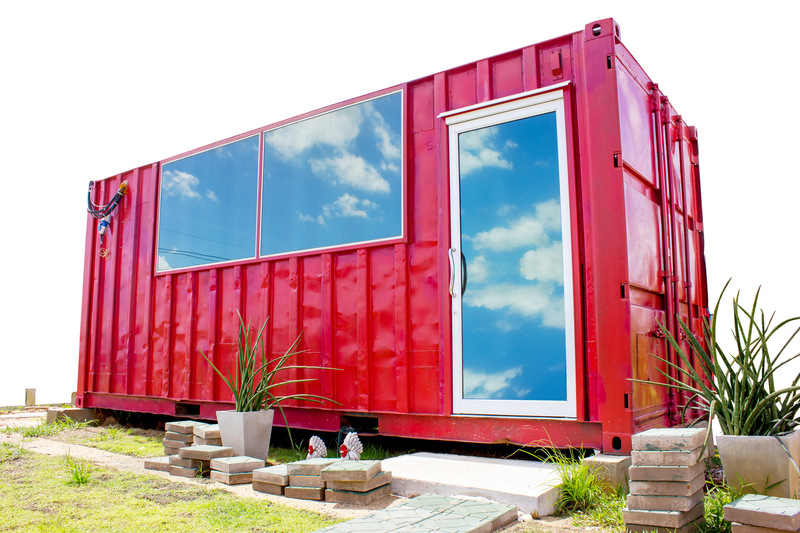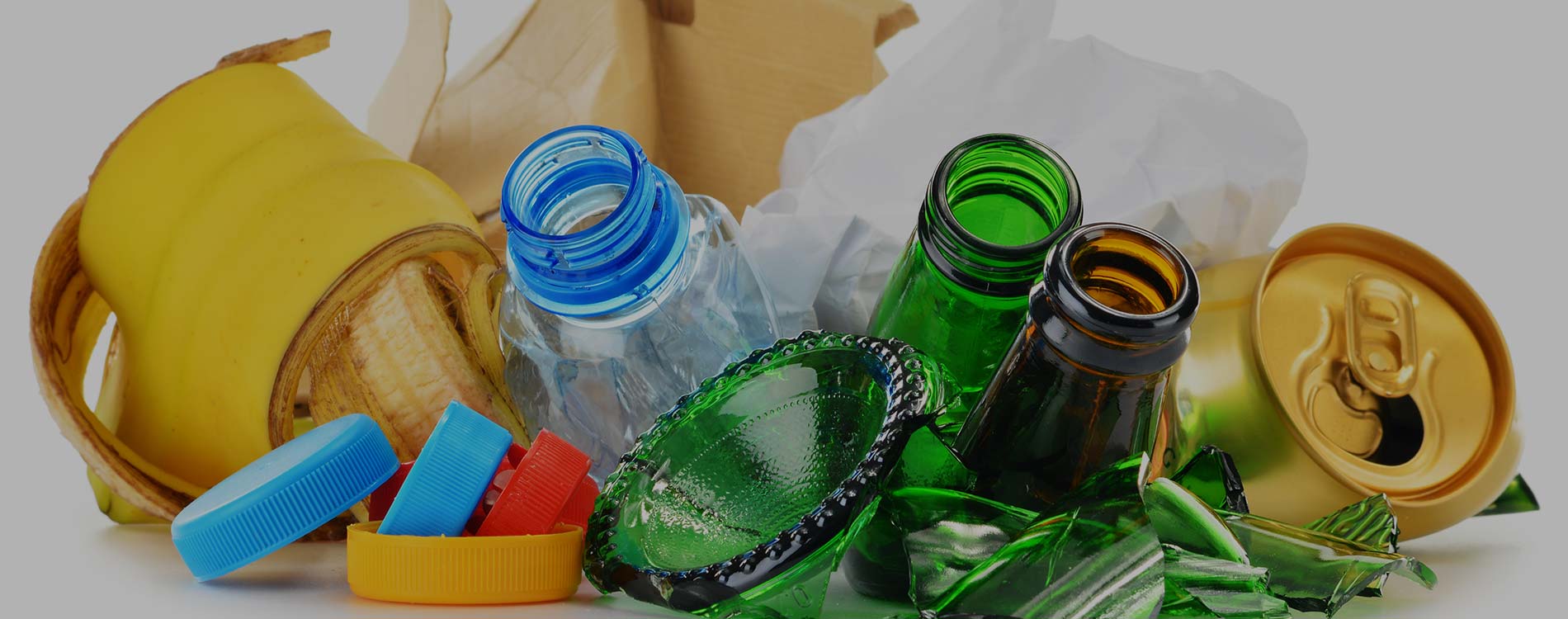From Toxic to Biohazardous: Unveiling What Qualifies as Hazardous Waste
Posted on 09/09/2025
From Toxic to Biohazardous: Unveiling What Qualifies as Hazardous Waste
In our modern world, staggering quantities of waste are produced every day. However, not all waste is created equal-- some pose grave risks to public health and the environment. This article aims to go beyond the basics, offering a comprehensive, Google-friendly exploration of hazardous waste: from toxic to biohazardous, let's unveil what truly qualifies as hazardous waste and why recognizing these materials matters more than ever.
What is Hazardous Waste? The Essential Overview
Hazardous waste refers to any waste material that, due to its properties or quantity, can cause substantial harm to human health or the environment if improperly managed. Such waste may be toxic, corrosive, ignitable, reactive, or infectious. Understanding what qualifies as hazardous waste is crucial for regulatory compliance, safe disposal, and environmental protection.
The Four Major Characteristics of Hazardous Waste
Most regulatory bodies, including the U.S. Environmental Protection Agency (EPA), classify hazardous waste based on four key characteristics:
- Ignitability: Materials that easily catch fire (e.g., solvents, fuels).
- Corrosivity: Substances that can corrode metal or destroy living tissue (e.g., acids and bases).
- Toxicity: Waste that is harmful when ingested or absorbed (e.g., heavy metals, pesticides).
- Reactivity: Materials that can explode or produce gases under certain conditions (e.g., peroxides, cyanides).
Additionally, certain wastes are classified as biohazardous, posing infectious or pathogenic risks to humans, animals, or the ecosystem.

The Regulatory Framework: Laws and Guidelines Governing Hazardous Waste
The management of hazardous waste is tightly regulated. In the United States, Resource Conservation and Recovery Act (RCRA) serves as the cornerstone legislation, while in the European Union, the Waste Framework Directive defines similar criteria. These regulations delineate what qualifies as hazardous, set standards for generators and handlers, and outline proper disposal, treatment, and record-keeping practices.
Key Legal Definitions and Lists of Hazardous Waste
- Listed Wastes: These are specifically named by regulatory authorities because of their hazardous nature (e.g., F-list, K-list from the EPA).
- Characteristic Wastes: These meet the aforementioned hazardous criteria even if not specifically listed.
- Universal Wastes: Items like batteries, pesticides, and certain light bulbs that are widely produced but still hazardous.
Knowing the distinction between these classifications is vital for anyone generating or handling hazardous waste.
Unveiling the Categories: Examples of Hazardous Waste Types
Toxic Waste: Common Culprits and Concealed Dangers
Toxic waste contains poisonous substances capable of harming organisms, even in small doses. Such waste may include:
- Heavy metals (lead, mercury, cadmium, arsenic)
- Pesticides and herbicides
- Unused or expired pharmaceuticals
- Solvents such as benzene and toluene
- Some electronic waste (e-waste) components
Why is toxic waste so dangerous? Even trace amounts can accumulate in organisms (bioaccumulation), moving up the food chain and causing severe health and environmental impacts, such as cancers, organ damage, and groundwater contamination.
Biohazardous Waste: Beyond the Lab
The term biohazardous waste or infectious waste expands hazardous waste definitions to encompass materials contaminated with biological agents. Such waste is especially pertinent in healthcare, viticulture, and laboratory settings, but can also arise from home healthcare.
- Used needles and sharps (syringes, lancets)
- Pathological waste (human tissues, organs, body parts)
- Blood-soaked bandages and dressings
- Microbiological cultures or stocks
- Items contaminated with infectious body fluids
Improper disposal of biohazardous waste can spark outbreaks of diseases, harm sanitation workers, and pollute communities.
Industrial and Chemical Waste: Out of Sight, Still a Threat
Numerous commercial and industrial processes produce hazardous chemical waste, often in large volumes. These may range from sludge containing solvents or metals to by-products of manufacturing (e.g., sludges from electroplating and painting, chemical reactors, mining tailings, and more).
- Paint thinners and waste paints
- Cleaning agents: perchloroethylene, trichloroethane, etc.
- Acids and bases
- Pesticide manufacturing residues
- Cyanide wastes
Some industrial chemicals, such as polychlorinated biphenyls (PCBs), are classified as persistent organic pollutants (POPs) and are heavily regulated due to their extreme toxicity and bio-persistence.
Special Focus: E-Waste, Pharmaceuticals, and Household Hazardous Waste
E-Waste: The New Generation of Hazardous Waste
Electronic waste (e-waste) has surged with the digital revolution. What may seem like inactive or obsolete electronics could in fact harbor a trove of toxic materials, including:
- Lead (in circuit boards and CRT monitors)
- Mercury (LCD screens, switches)
- Cadmium (batteries, semiconductors)
- Brominated flame retardants (plastic casings)
Proper recycling and disposal of e-waste are essential to prevent toxic leaching and protect public health.
Pharmaceutical Waste: An Invisible Threat
Leftover medicines, old prescriptions, chemotherapy drugs, and veterinary pharmaceuticals all qualify as hazardous pharmaceutical waste when they can cause toxicity, are cytotoxic, or have the potential to harm the environment.
- Expired chemotherapy drugs
- Controlled substances (opioids, amphetamines)
- Hormonal and antibiotic residues
- Over-the-counter medications in large quantities
Flushing medicines can contaminate drinking water, while discarding them in trash can expose wildlife and humans to harm.
Household Hazardous Waste: The Hidden Danger in Your Home
Many everyday products lurking under your sink or in the garage are examples of household hazardous waste (HHW). These include:
- Paints, solvents, glues, and varnishes
- Batteries (lead-acid, lithium-ion, and nickel-cadmium)
- Pesticides and herbicides
- Motor oil, antifreeze, and other automotive fluids
- Cleaning chemicals (ammonia, bleach, drain cleaners)
Improperly managed HHW can pollute air, water, and soil, and cause accidental poisonings or fires.
The Danger Zone: Consequences of Improper Hazardous Waste Disposal
When hazardous waste is not managed or disposed of correctly, the results can be devastating:
- Public health threats including increased cancer risk, developmental disorders, respiratory illness, and infectious disease outbreaks.
- Environmental devastation through air, soil, and water contamination, impacting biodiversity, food safety, and ecosystem services.
- Occupational hazards for workers in waste handling, sanitation, and healthcare sectors.
Historical catastrophes such as Love Canal and Minamata Bay serve as grim reminders of the consequences of ignoring hazardous waste risks.
Safe Management and Disposal of Hazardous Waste
Identification & Segregation
The first step is correct identification and segregation of hazardous waste. This often involves:
- Labeling containers clearly ("Biohazardous," "Toxic," "Corrosive", etc.)
- Maintaining separate collection for different waste types
- Training staff to recognize and handle hazardous materials safely
Storage, Transportation, and Disposal
Once identified, hazardous waste must be stored in compliance with local and national regulations, using leak-proof and secure containers, and must not be mixed with general waste. Transportation is typically handled by licensed professionals.
Final disposal methods include:
- Incineration (especially for biohazardous and pharmaceutical waste)
- Chemical-neutralization for acid/base waste
- Secure landfilling for certain types of stable waste
- Specialized recycling and recovery for e-waste and batteries
The Importance of Public Awareness and Community Involvement
The public plays a critical role in reducing hazardous waste risks. Awareness campaigns, community collection programs, and education about proper disposal can make a substantial difference.
Check with local authorities or waste management facilities for special hazardous waste drop-off events or recycling programs.

Global Challenges and Innovations in Hazardous Waste Management
The battle against hazardous waste is ongoing. Developing nations face unique challenges due to limited resources, lack of awareness, and illegal shipments of toxic waste. International conventions, such as the Basel Convention, seek to regulate the global movement of hazardous materials.
Meanwhile, advances are being made:
- Green chemistry is reducing the inherent hazards of industrial processes and products.
- Bioremediation and phytoremediation use living organisms to detoxify contaminated sites.
- Smart packaging and tracking improve the traceability of hazardous waste streams.
- Innovative recycling methods, especially for e-waste and batteries, recover valuable materials and reduce environmental impact.
Conclusion: Why Understanding Hazardous Waste Matters
In summary, hazardous waste, from toxic chemicals to biohazardous materials, is defined not only by its dangerous properties but by its potential to cause grave harm if mismanaged. Recognizing the myriad forms it takes and understanding the regulatory frameworks, safe handling procedures, and disposal practices are essential for every sector--from households to industries.
As individuals and communities, our vigilance and commitment to proper hazardous waste management can protect health, safeguard our environment, and build a more sustainable future for all.
If you're ever unsure about what qualifies as hazardous or biohazardous waste, reach out to local waste authorities or visit official EPA or environmental websites for guidance.
- Remember: When it comes to hazardous waste, knowledge is not just power--it's protection.

 020 3744 2205
020 3744 2205








